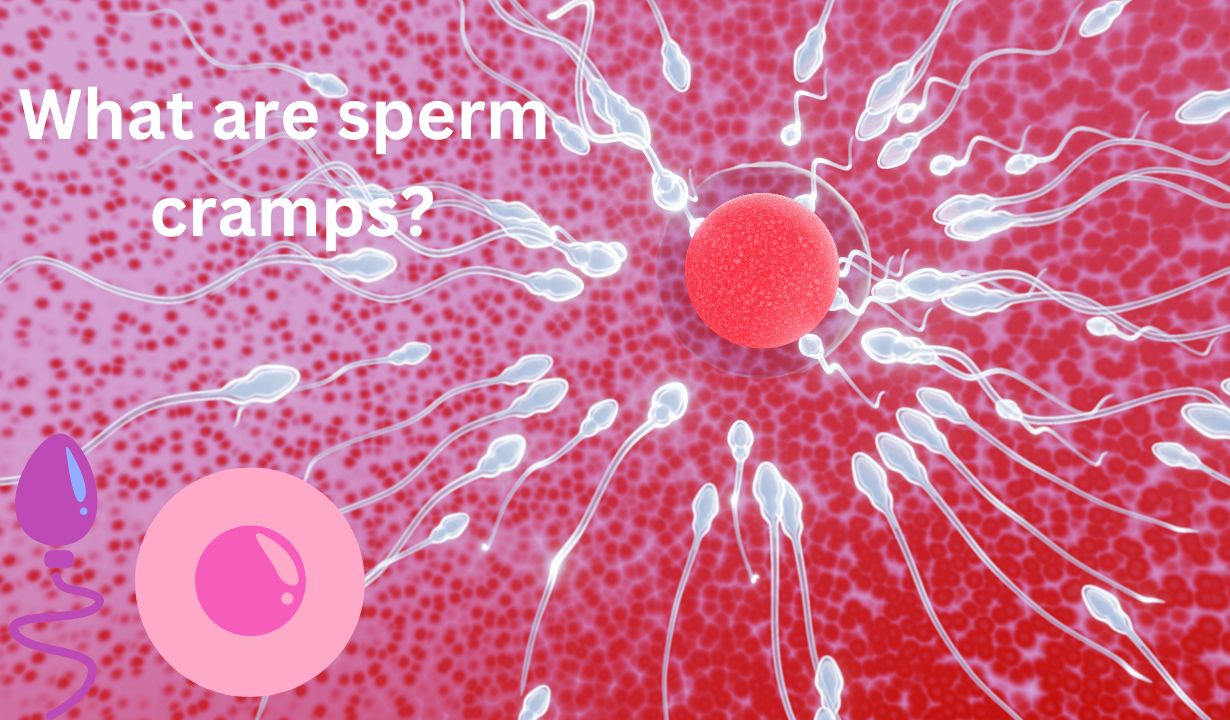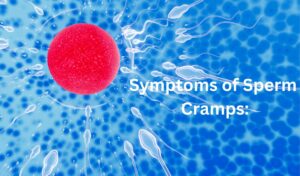Introduction: In the realm of reproductive health, there exist various phenomena that often remain shrouded in mystery and seldom discussed openly. One such intriguing occurrence is the phenomenon of sperm cramps. While the topic may raise eyebrows or elicit curiosity, understanding sperm cramps is essential for promoting awareness and addressing concerns related to male reproductive health. In this article, we delve into the depths of this unique phenomenon to shed light on its causes, symptoms, and potential remedies.
Table of Contents
Toggle What are sperm cramps?
What are sperm cramps?
Sperm cramps, also known as epididymal hypertension or “blue balls,” refer to the sensation of discomfort or pain in the testicles and groin area following sexual arousal without ejaculation. This phenomenon is most commonly experienced by males but can vary in intensity and duration.
Causes of Sperm Cramps:
The underlying cause of sperm cramps lies in the physiology of the male reproductive system. During sexual arousal, blood flows to the genitals, causing the penis to become erect and the testicles to enlarge. This process also leads to the production and accumulation of sperm in the epididymis, a coiled tube located behind each testicle.
However, if ejaculation does not occur following prolonged sexual arousal, the accumulated sperm and increased blood flow can cause pressure to build up in the epididymis and surrounding blood vessels. This buildup of pressure is believed to be the primary cause of sperm cramps.
Symptoms of Sperm Cramps:
The symptoms of sperm cramps can vary from mild discomfort to sharp pain in the testicles and groin area. Individuals experiencing sperm cramps may also report sensations of heaviness, pressure, or aching in the affected region. In some cases, the discomfort may radiate to the lower abdomen or thighs.
It’s essential to differentiate sperm cramps from other medical conditions that can cause similar symptoms, such as testicular torsion or urinary tract infections.
Remedies and Relief:
Fortunately, sperm cramps are usually temporary and typically resolve on their own once sexual arousal subsides or ejaculation occurs. However, several strategies may help alleviate discomfort and promote relief:
- Ejaculation: Engaging in sexual activity to achieve ejaculation can help release built-up pressure in the epididymis and provide relief from sperm cramps.
- Cold Compress: Applying a cold compress or ice pack to the affected area can help reduce inflammation and numb the sensation of pain or discomfort.
- Rest and Relaxation: Taking a break from sexual activity and allowing the body to rest can help alleviate symptoms of sperm cramps.
- Pain Medication: Over-the-counter pain relievers, such as ibuprofen or acetaminophen, may help alleviate discomfort associated with sperm cramps. However, individuals should follow the recommended dosage and consult a healthcare professional if symptoms persist or worsen.
Conclusion:
Sperm cramps may be a unique and somewhat perplexing phenomenon, but they are a relatively common experience among males. Understanding the underlying causes, symptoms, and potential remedies for sperm cramps is essential for promoting awareness and addressing concerns related to male reproductive health. By fostering open dialogue and education on this topic, we can empower individuals to seek appropriate care and support for their reproductive well-being.
Debunking the Myth: Are Sperm Cramps Real?
Introduction: In the world of human biology and sexual health, myths and misconceptions often abound. One such topic that frequently arises is the notion of “sperm cramps.” These supposed cramps are believed by some to occur after ejaculation or during sexual activity, causing discomfort or pain. But are sperm cramps real, or are they simply a figment of imagination? Let’s delve into this intriguing topic and separate fact from fiction.
Understanding Sperm Cramps: Firstly, it’s crucial to understand the physiology behind ejaculation and the role of muscles involved in the process. During ejaculation, the muscles surrounding the reproductive organs, including the vas deferens, prostate gland, and seminal vesicles, contract rhythmically to propel semen through the urethra and out of the body. These contractions are essential for the release of sperm and seminal fluid.
Debunking the Myth: While it’s not uncommon for individuals to experience sensations or discomfort during or after sexual activity, the idea of “sperm cramps” is not supported by scientific evidence. The discomfort or pain that some individuals may attribute to sperm cramps is more likely due to other factors.
Possible Explanations:
- Muscle Fatigue: The rhythmic contractions of muscles during ejaculation can sometimes cause temporary muscle fatigue or soreness, similar to what one might experience after engaging in any physical activity. However, this discomfort typically subsides relatively quickly and is not indicative of a medical issue.
- Pelvic Pain: Discomfort during or after sexual activity can also be attributed to pelvic floor tension or other underlying conditions such as prostatitis or pelvic inflammatory disease. These conditions require medical attention and evaluation by a healthcare professional.
- Psychological Factors: It’s essential to recognize the role of psychological factors in experiencing discomfort during sexual activity. Anxiety, stress, or performance pressure can manifest physically and may contribute to sensations of discomfort or pain.
Seeking Medical Advice: If an individual experiences persistent or severe discomfort during or after sexual activity, it’s crucial to seek medical advice. A healthcare professional can assess the situation, perform necessary tests, and provide appropriate treatment or recommendations based on the underlying cause.
Conclusion: In conclusion, while the idea of sperm cramps may persist in popular culture, scientific evidence does not support their existence as a distinct phenomenon. Discomfort or pain experienced during or after sexual activity is more likely attributable to other factors such as muscle fatigue, pelvic tension, or psychological influences. Understanding the body’s physiology and seeking medical advice when necessary are essential steps in addressing concerns related to sexual health and well-being.
By debunking myths and misconceptions, we can foster a more informed understanding of human biology and promote open discussions about sexual health. Remember, knowledge is power, and seeking accurate information is key to maintaining overall well-being and happiness.


 What are sperm cramps?
What are sperm cramps?